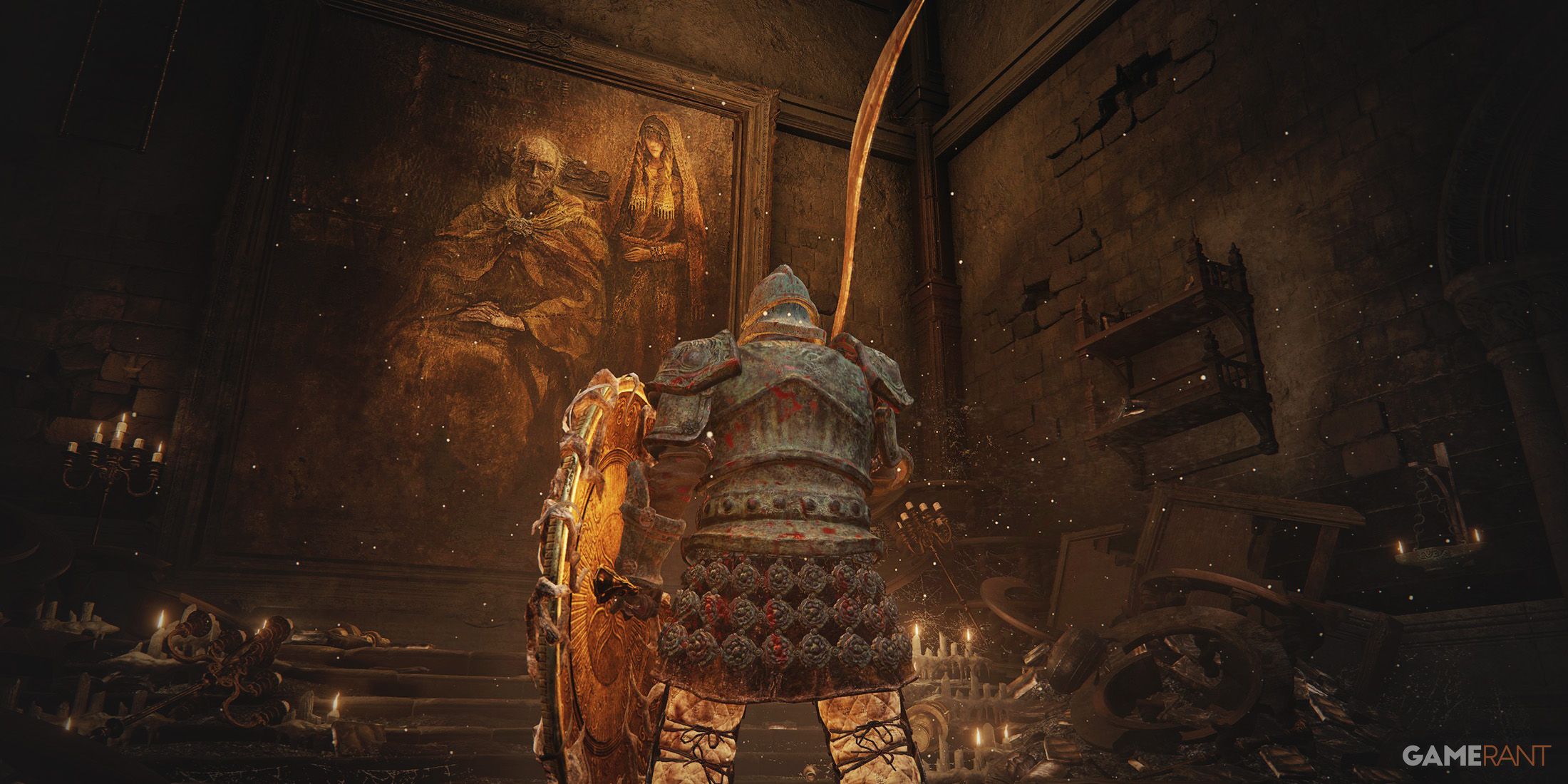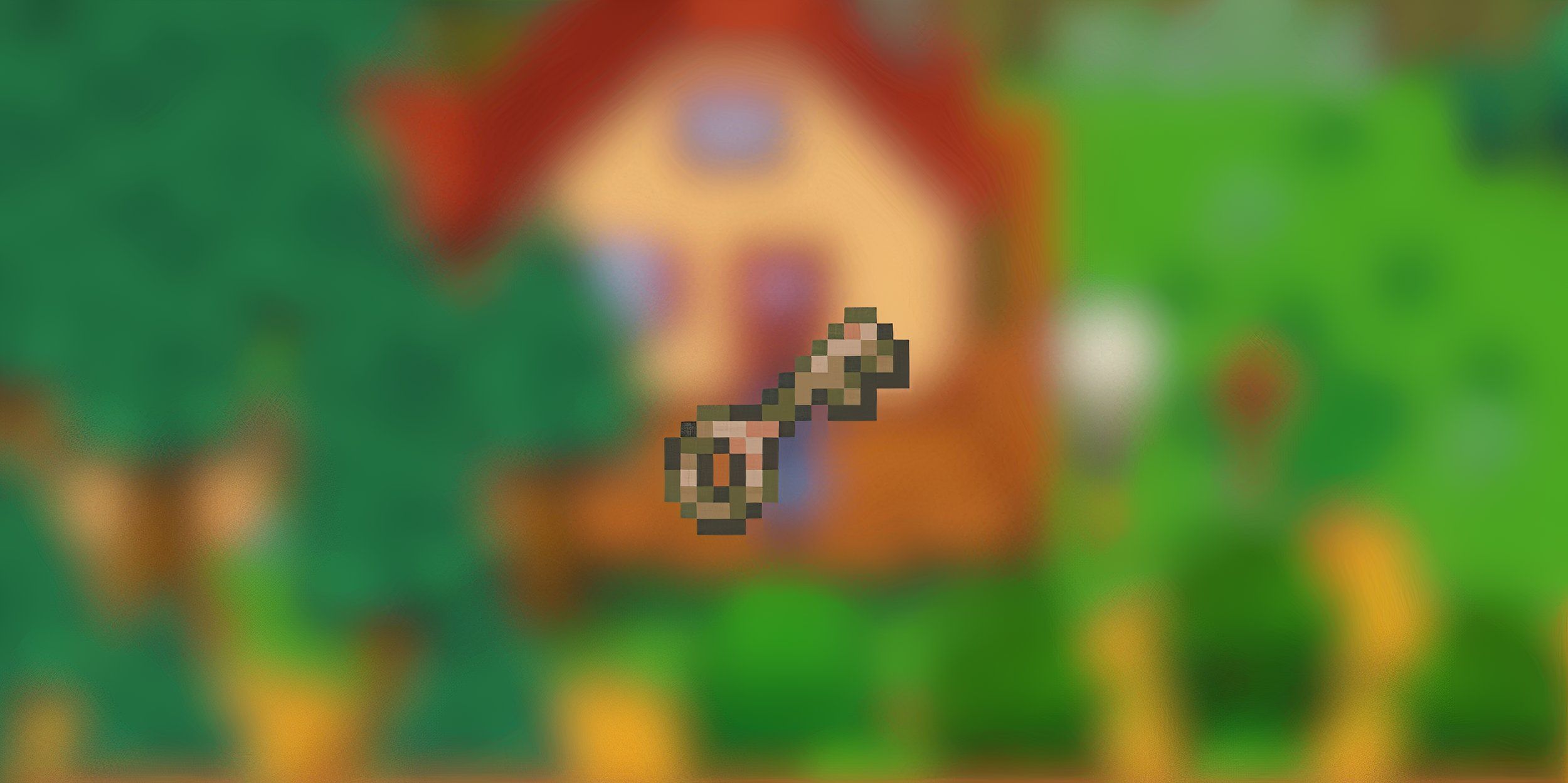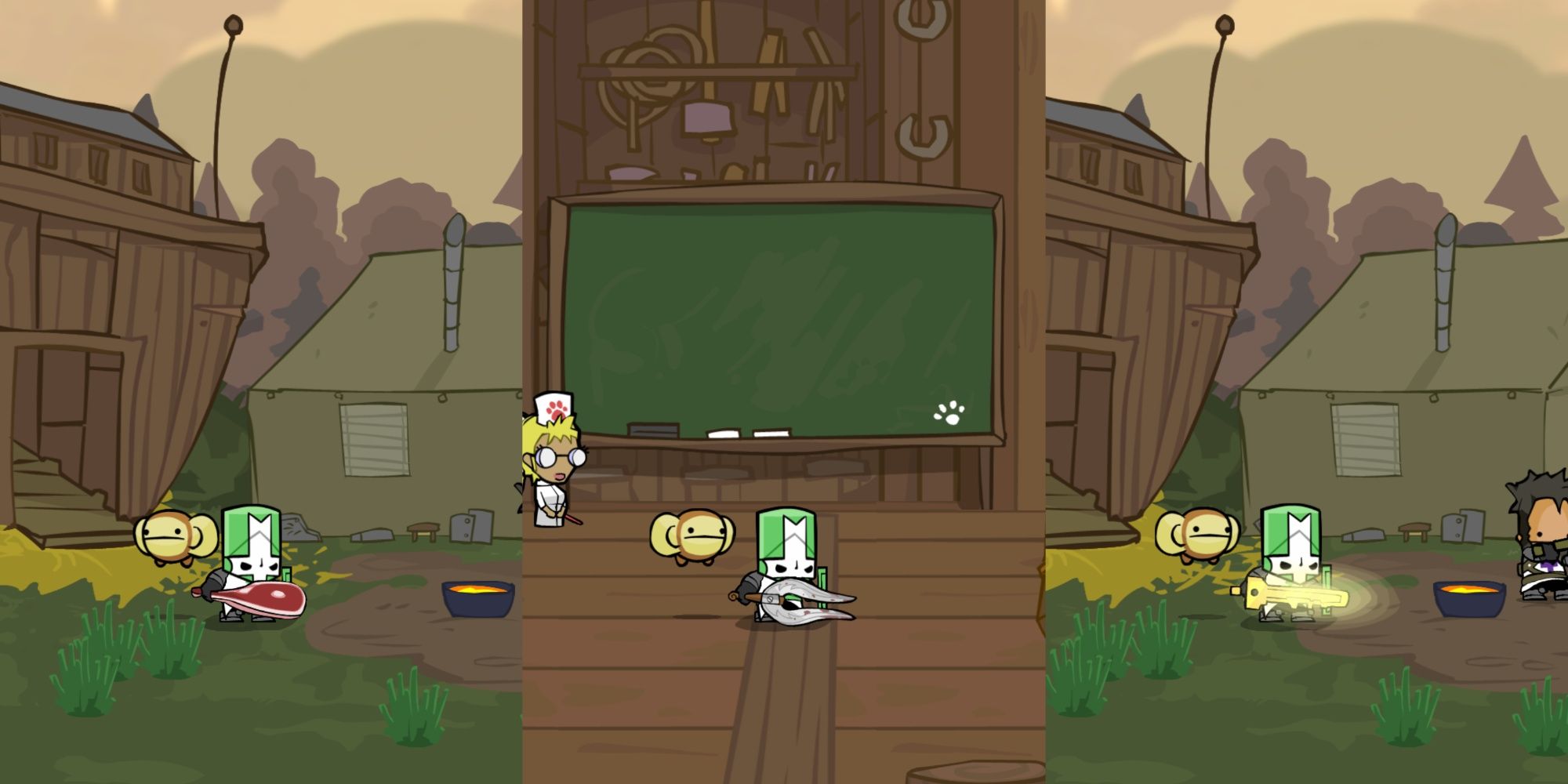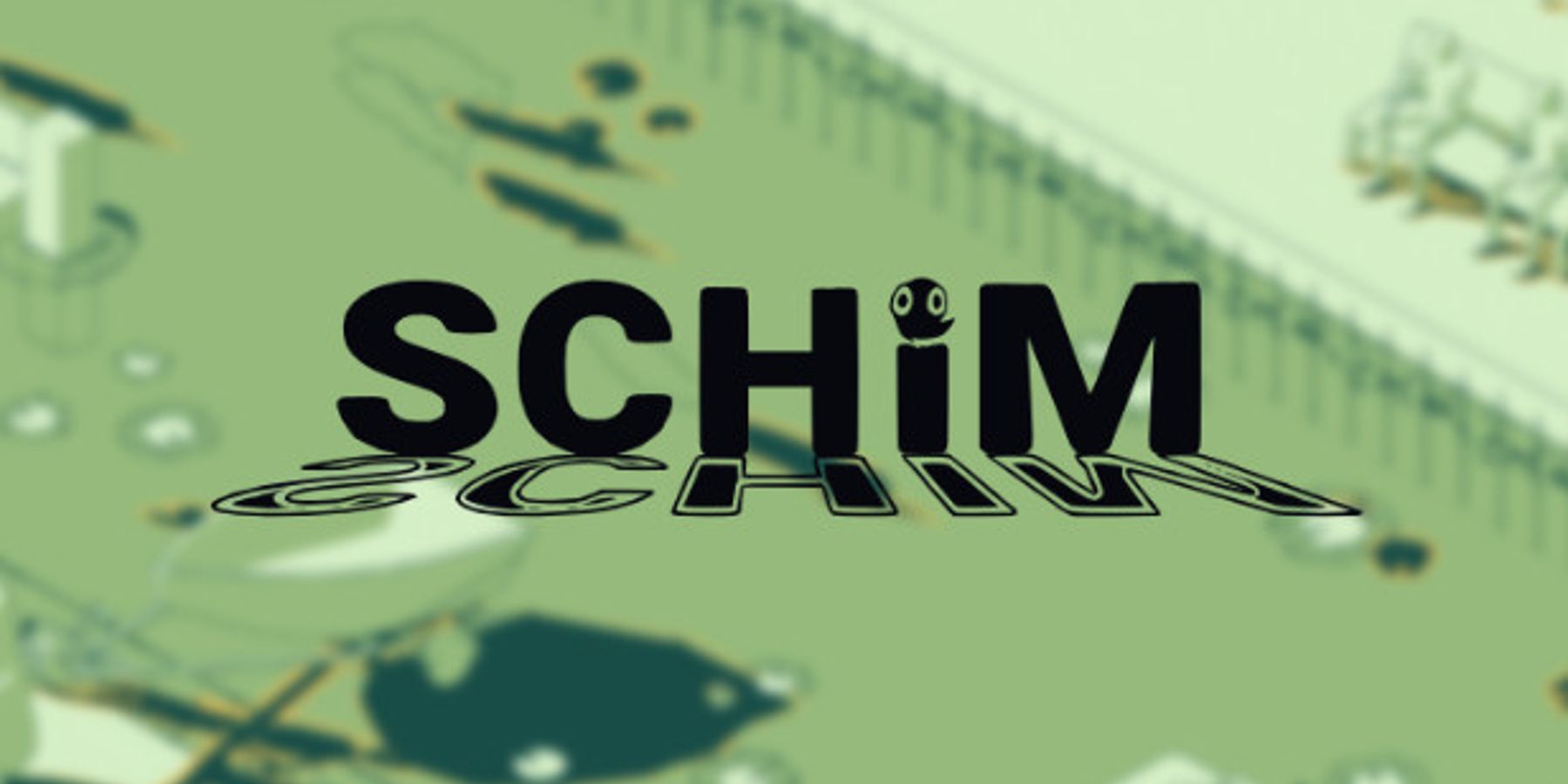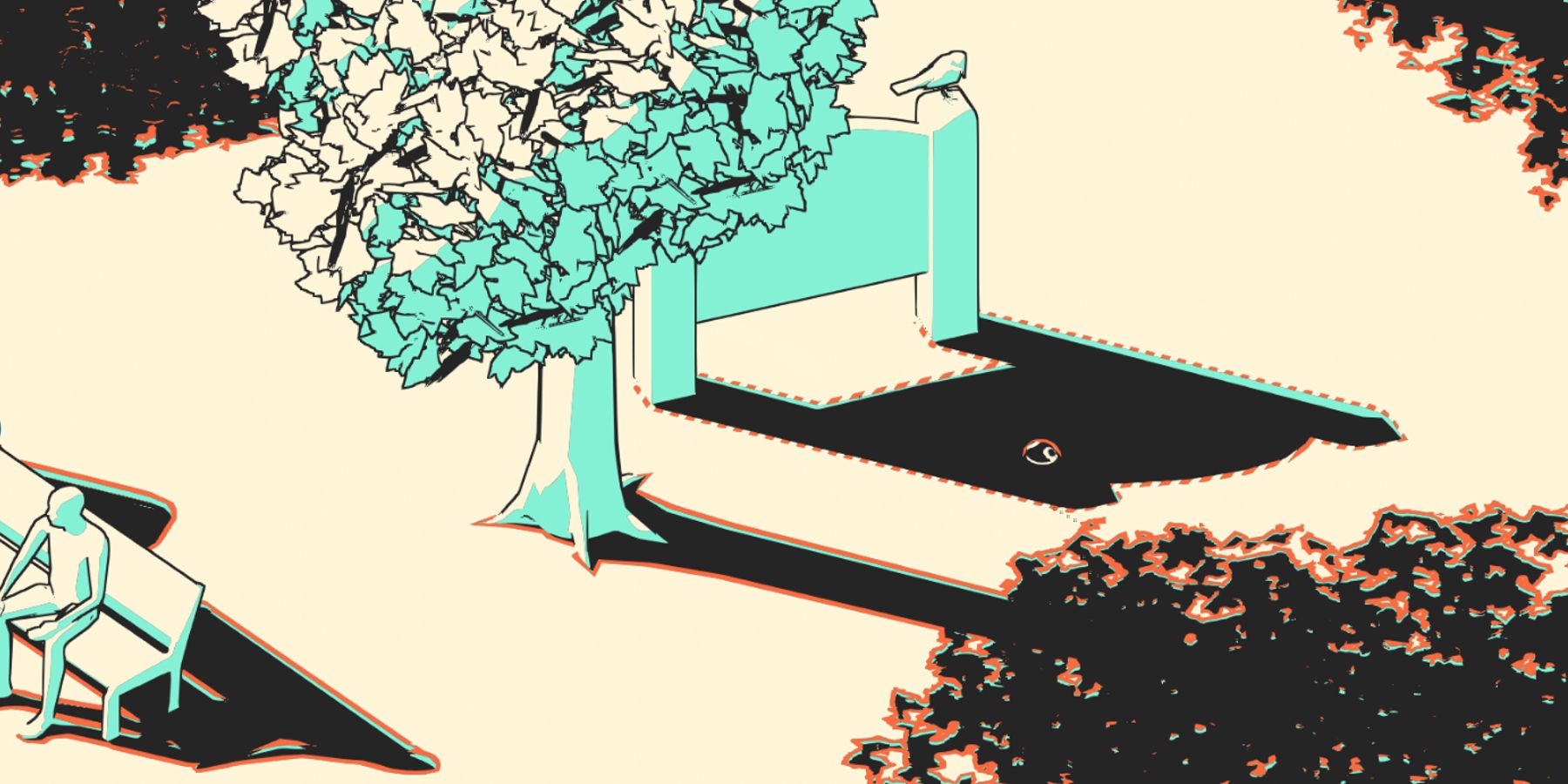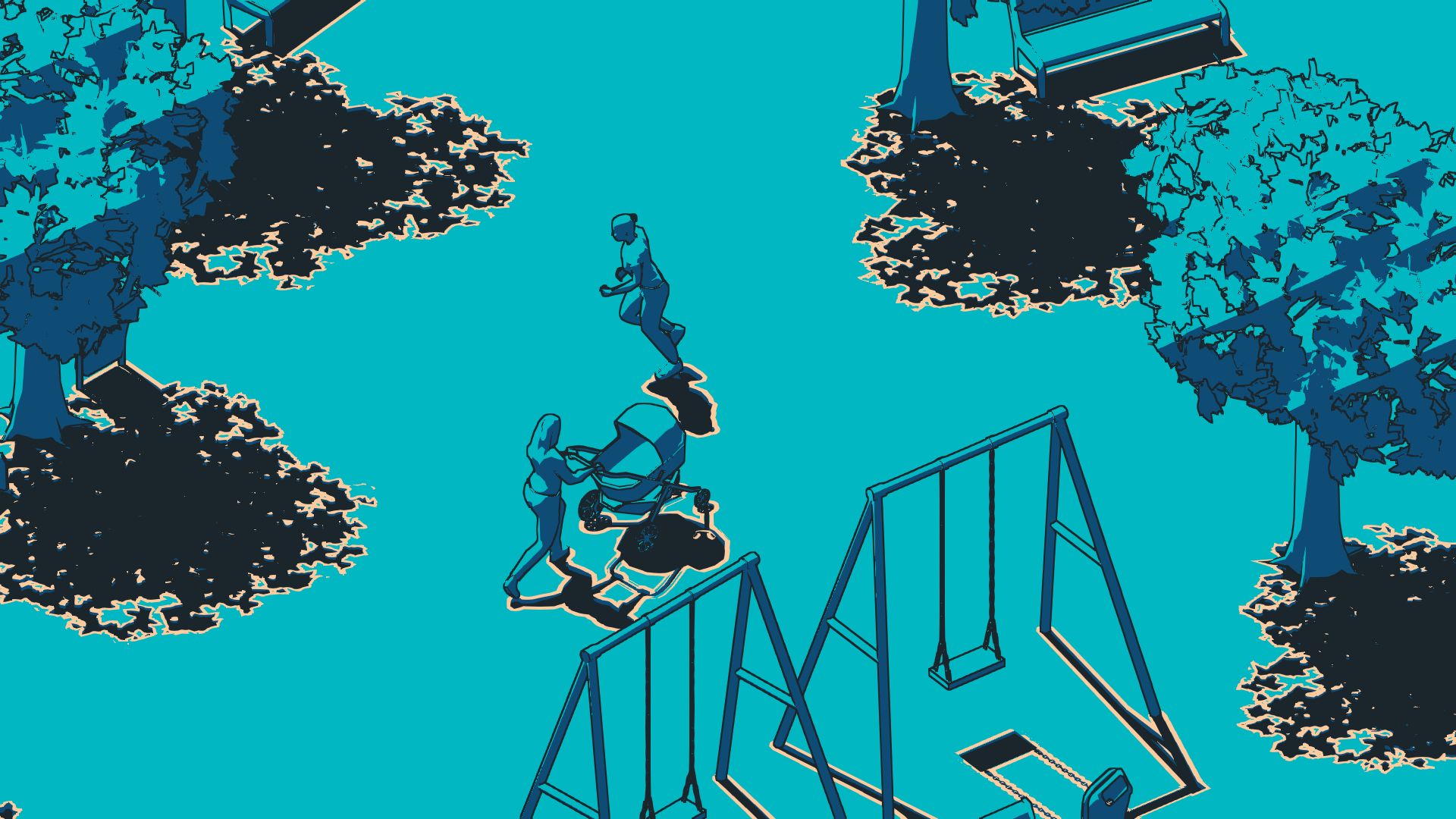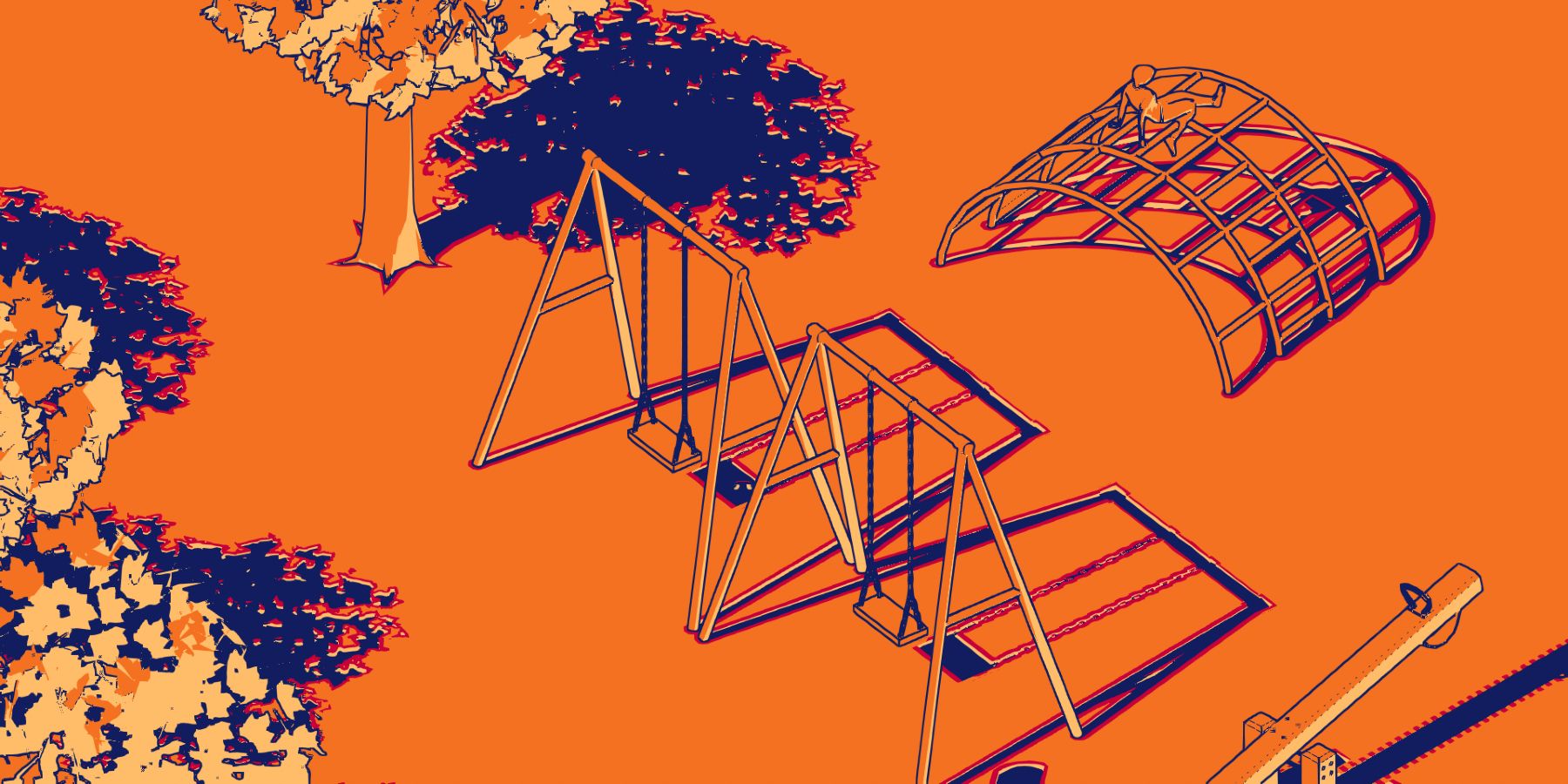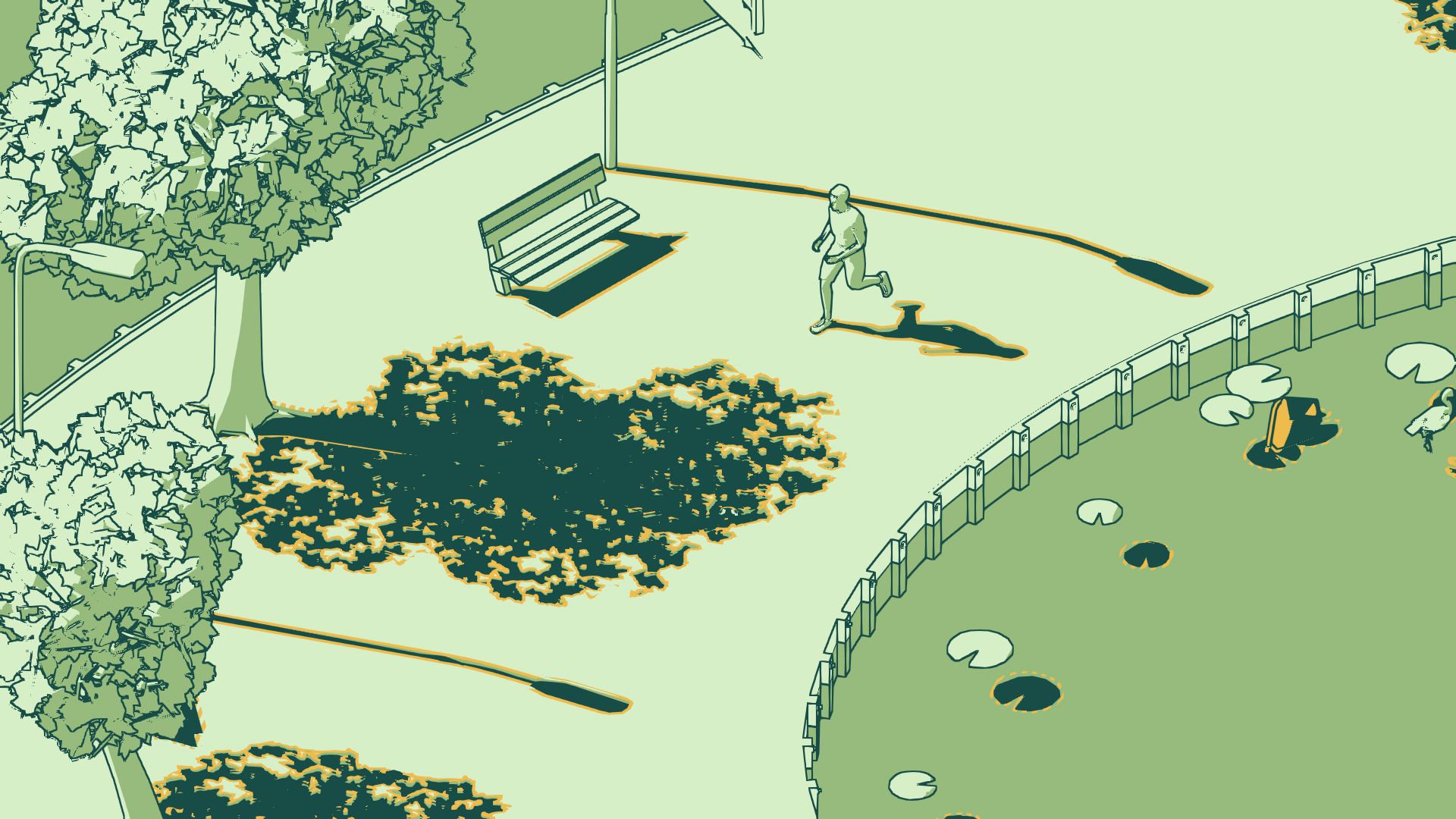Everyone is inspired by something, be it the people around them or pieces of media they grew up enjoying. For indie developers those inspirations are often quite obvious, from the glut of SNES-style titles taking cues from series like The Legend of Zelda or Final Fantasy to a title like Wander Stars that wears 90s anime influences on its sleeve. While SCHiM has a number of influences it can point to, lead developer Ewoud van der Werf hopes his game connects to peoples' memories of real-world childhood play.
Game ZXC spoke to van der Werf about SCHiM's development history, changes with growing popularity, and underlying focus on an artsy design with attention to colorblind accessibility. Interview has been edited for clarity and brevity.
Q: Tell me a little about yourself.
A: I'm Ewoud van der Werf, the main developer of SCHiM. I'm mostly developing the game solo, but also working with Extra Nice, which helps with level design, game design, technical stuff, and so on.
Q: I understand SCHiM started as a school project. What you were studying, and how did it get to this point?
A: I was studying game design, which was basically two areas of study at Friesland College in Leeuwarden, in the Netherlands. You had the development side and the artist side. I was always very interested in programming and art, and for the first year of the course you could do both - but then later you had to pick one. I went for development.
I was able to do it fast-tracked, finishing school pretty quickly. SCHiM was made for an exam, but before that I had an internship at Extra Nice. The goal of the exam was to create a game for Extra Nice, and they gave me complete freedom to make whatever game I wanted. That's where I went with the idea for jumping in shadows and the art style; those were the main things I had in mind before I started.
Q: Where did the idea come from originally?
A: I think what makes SCHiM resonate with a lot of people is it's like childhood play. When people see this game for the first time they usually react saying, "Oh I've done that in my childhood." They can relate to that, and it's where I got inspiration. Stepping on certain cracks in the pavement, or certain tiles, where lines start crossing. That's where it really stems from.
Q: I've definitely done the same thing. Were there any games you played growing up that inspired you, in general or for this idea?
A: Maybe Splatoon was kind of an inspiration when we started, for obvious reasons. I'm also a big fan of indie games, especially artsy indie games, and 3D platformers are pretty fun. I can't really name one specific game.
Q: Well in terms of indie games, are there any that made you think about breaking into the industry?
A: I like good-looking games like Gris or Journey, those are very pretty. But again, I don't think there's one particular game that made me want to become an indie dev.
Way before I got into college, in high school I was already creating my own mobile games. That's where I really got my head start. In terms of being indie I just like to do a lot of different things in terms of art, modeling, programming, coming up with ideas, concepting. I do that a lot by myself, I think that makes me more indie.
Q: For those early ventures, were you already experimenting with platformers? What kind of ideas did you mess with?
A: Honestly, I think my earlier games are really not that interesting, but they were an important way for me to get started. Now I'm creating the sort of games I like to make. I usually come up with the concept for something, one main thing, and then I have to think about the entire game around it. At least that's how I used to do things, now I do it a bit differently.
Basically, I started off with games that had to become a game as an afterthought, but I'm glad I did finish them.
Q: In terms of your internship with Extra Nice, did you get connected with them for any particular reason?
A: It was through school. Nils Slijkerman from Extra Nice, who helps out with SCHiM now, used to be a part-time instructor/guest lecturer helping with game design courses. That's where we met. He introduced me to his company, and that's how things went.
Q: Did you decide to go with them just because of that connection, or was there something the team made that caught your eye?
A: Not necessarily. I think at the time I already had my head start, I wanted to finish school really quickly. Extra Nice approached me and seemed like a fun company, so I joined them. They were working on their own game, Skirmish - a 2D hack-and-slash type of game. That's where I also worked as an intern.
Q: In the press release you said there was interest in SCHiM that led to it becoming a full-fledged project. How did your relationship with Extra Nice expand?
A: At the start it was mostly just me working on SCHiM. Nils later saw a lot of potential with it and spent more time with it, and that's where the relationship really developed. It made us want to see what this game could become, which led to us expanding the scope and adding more features.
Q: How much has that scope grown?
A: I don't think it has gotten out-of-hand or anything, just a bit bigger. At first, it was just about moving from shadow to shadow, jumping between them; that's it. Very short, small levels. Now we're also focusing more on backstory, and you can interact with the world, which has more unique characters. There are collectibles, more focus on making exploration a bit more fun, music. At first, it was just meant to be a small project for graduation, it didn't have to be that big.
Q: As far as SCHiM's story goes, with a spirit trying to find its person, where did the idea come from?
A: Where we basically got the idea from was tsukumogami, which is Japanese folklore describing objects that have their own spirit. Then we made it into our own sort of folklore surrounding Schim. Each object in the world has its own Schim, including people and animals. Those creatures live in the shadows and should never be separate from their objects, but this happens to the main character. It's your job to reconnect them.
Q: Did you have a story in mind from the beginning, or was it mechanics-first?
A: To me, it was the mechanic and the art style. That's the first thing that came to mind. Then we got to thinking about this world, how does it operate, all those elements.
Q: Speaking of that art style, was it always intended to have a minimalist look, or is that because it started as such a small project?
A: Both, I think. If you look at the game now it has a lot more details and textures, but at the very start it only had silhouette outlines. It was a pretty cheap effect, now there's a lot more effort going into those things. We look at the silhouette of it, draw a line around that, then add detail. A lot of it is experimenting to see what works, maybe add some extra detail - but it could be a bit too much detail, which looks kind of weird. I also take references from cartoonists, that usually helps.
Q: Would you say the art direction of SCHiM leans toward any of your inspirations?
A: It's pretty close to ligne claire, or "clear line." It means clear lines usually of the same thickness, flat colors, very dark shadows. Some examples of that would be The Adventures of Tintin by Georges Remi, or Dutch illustrator Joost Swarte. Those guys really pioneered it, I think.
Some recent indie games that use the same kind of art style would be Sable or Manifold Garden. They use a similar rendering style with their outlines, at least.
Q: Have you pulled any ideas from those games specifically?
A: Not necessarily. When we started I used these inverted hull-type shaders like you'd see in Jet Set Radio, for example. It wasn't really what I wanted, but it was also a learning experience. Later I picked up post-processing effects and worked with outlines there.
Q: In terms of color, where did you land on the idea of using just four colors per-level?
A: That's actually because I have a form of colorblindness. I'm really not that good with picking colors and blending them, so I just wanted to have four colors for the whole game. Every level would use the same four colors because I didn't want to bother with too much, especially at risk of them clashing with each other. At the time I didn't have much of an idea how they would fit.
Later, I got some feedback from someone who said it would be very bright or annoying to just look at this same four colors the entire game, so that's where we got the idea of using different palettes. Each level has its own color palette. It was very important to me that if I input a color it's exactly that color, regardless of lighting, with no blending.
Q: If you don't mind me asking, what kind of colorblindness do you have?
A: It's mostly blues, those kinds of colors. I don't remember exactly what kind, but it's a very light form.
Q: On SCHiM's website there's a palette swap system to try out different color combinations. Will that carry over to the full game or is everything set?
A: Each level has its own set palette, but I am thinking of adding a kind of Easter egg to bring the full SCHiM palette over to the game. I think it could be kind of fun if it's not too much work.
Q: Are there other accessibility options you've considered?
A: I didn't think it was necessary if we just test these colors on people with different forms of colorblindness. Ideally every palette should be nice to look at for everyone on the go.
For other accessibility options, we haven't really thought that through yet. But ideally we want it to be a casual game, so it should appeal to most people. Most people should be able to pick it up and play.
Q: In that case, how did you approach level design for a game like this? How many environments are there?
A: The game is set in a very urban environment with different iterations. But there is some nature, inspired by Dutch cities. Lots of canals, Dutch dikes, beaches.
Q: Was it difficult to essentially design 3D platformer puzzles with two-dimensional objects like shadows?
A: Puzzles are pretty simple overall, and we wanted to incorporate "plays" as we call them. Essentially, they're interactable stories of characters that you can influence. Each object has its own sort of active state where if you hop into an object and interact it activates a certain property. For example, if you hop into a car and interact it makes the car honk its horn. Or if you hope into a bike, it can play the bicycle ring. Objects around that will react, which was a big way for us to design puzzles.
Q: When I reached out you said it was probably too early to be talking about SCHiM's beta sign-ups, but can you tell me more about what the plan is there?
A: Yeah, I don't want to give a release date yet for that. It will happen through Steam, but I'm not sure what to talk about yet.
Q: Well what made you feel like you were at a stage where you could start getting sign-ups going for it?
A: The sign-ups have actually been enabled for a pretty long time. I thought about enabling the Playtest feature when Steam first announced it, figured it would be interesting to start collecting them in advance and get a group together to playtest the game. It's not really a beta at this stage, but some other journalists picked up on it and made it seem like it was an announcement - it was just enabled. Things got kinda out of hand.
Steam Playtest essentially enables developers to let people sign up for playtesting. You can manage the group of people who signed up, give random numbers of people access. I don't know, at the time I thought it was just a very secure way to get some feedback.
Q: Even if you haven't geared up for that public playtest, has anybody tried the game and given you feedback?
A: Sure, at Extra Nice there are interns who get to test it, or we go to events and get peoples' reactions. Also, just friends. They like it.
We usually just see so many errors in the game, so many flaws. But then others will play it and be surprised, saying how smooth it plays. When we design levels it's very easy to get lost or not know if it's fun, so it's important to get those playtests.
Q: Does getting those reactions help you work through the moments where you're just looking at flaws?
A: Yeah, yeah. It does help. Very rarely I get to see the game truly for what it is, I'll always have a very critical view of the project. Even if they don't like a level, that's still good feedback that we can improve upon.
Q: Are there any big improvements you've made based on feedback?
A: It's usually just small things, things people will miss. For example, we have this system for focusing on the objective of a level, and it used to go way too fast, to the point it was kind of nauseating. People said you have to make a better system for that, so we did and it's fine now. Also, if something happens and it isn't totally clear to the player why that happened, that usually needs some attention.
Q: Since you said you like putting together concepts, are there other ideas for games you're thinking about while working on SCHiM?
A: Yeah, I have my own sort of ideas of what kind of game I'd like to make next. A lot of stuff is very visual, things I have in mind use very different art styles to SCHiM. I even have some ideas that are just art styles, without mechanics or game designs around it. With SCHiM, I think the art style and gameplay really come together.
Q: Do you think you'll keep working with Extra Nice on future projects?
A: Maybe so, I don't know if they have the time for it. We'll just have to see how it goes honestly, it's hard to predict. But I'll be sure to keep in touch with them.
[END]
SCHiM is currently in development for PC, PS4, PS5, Switch, and Xbox One.

